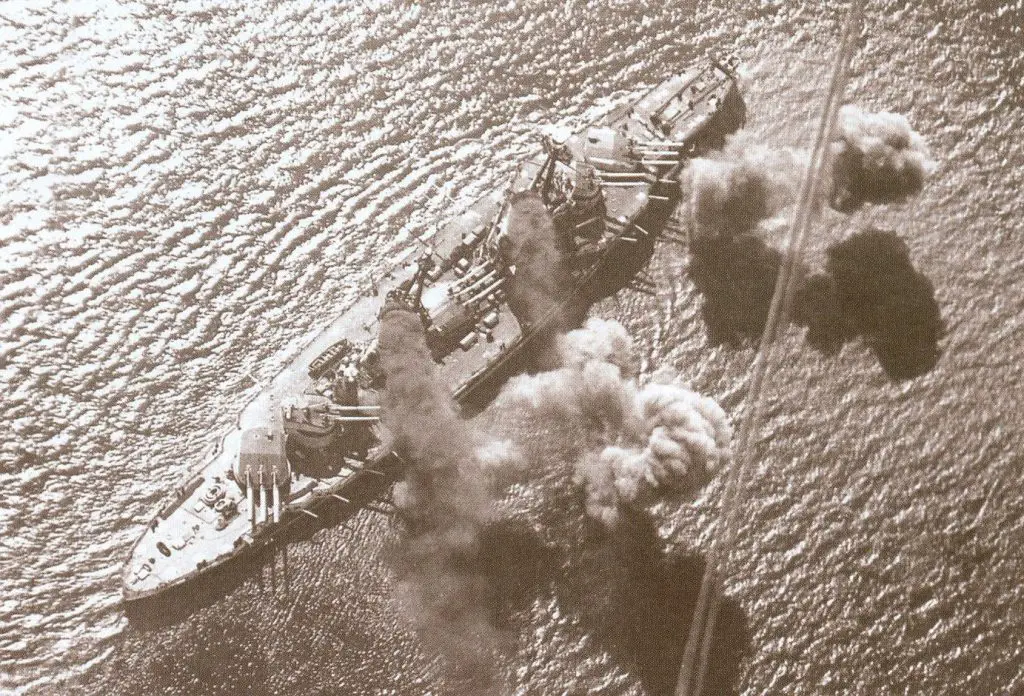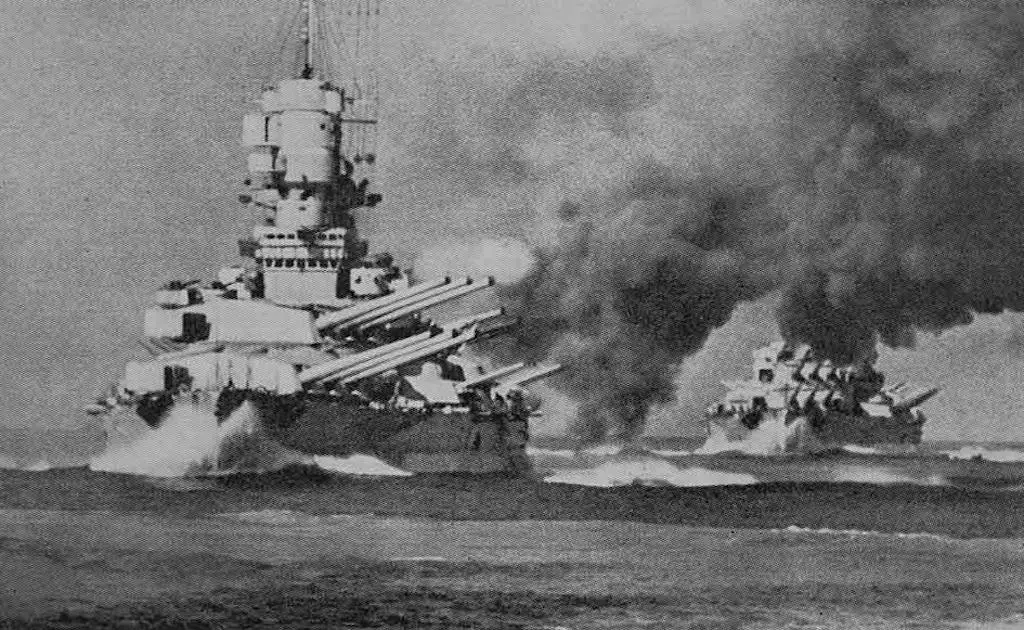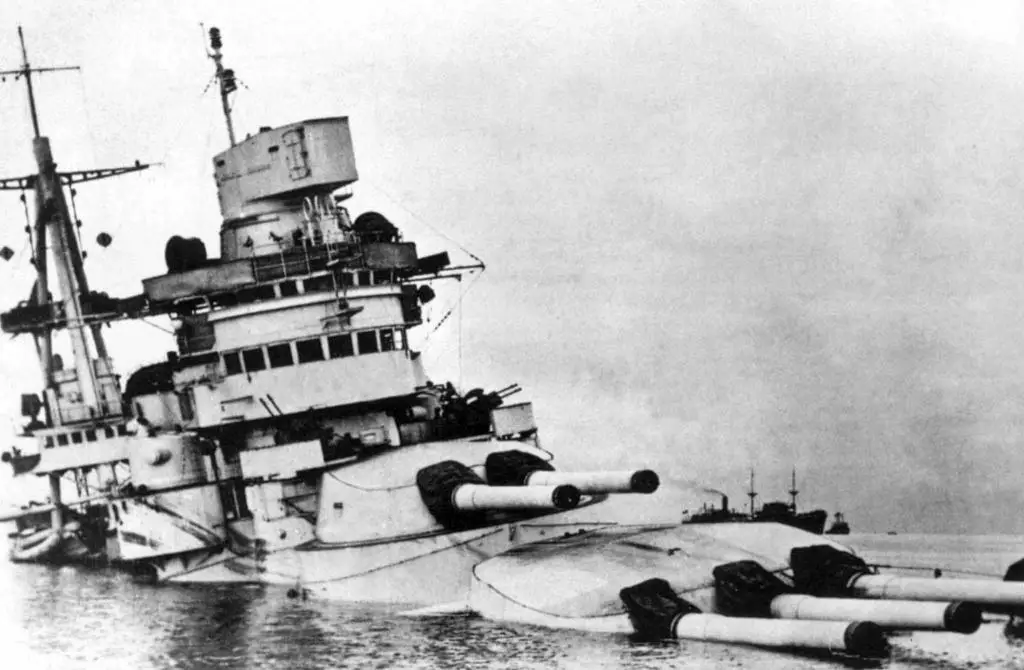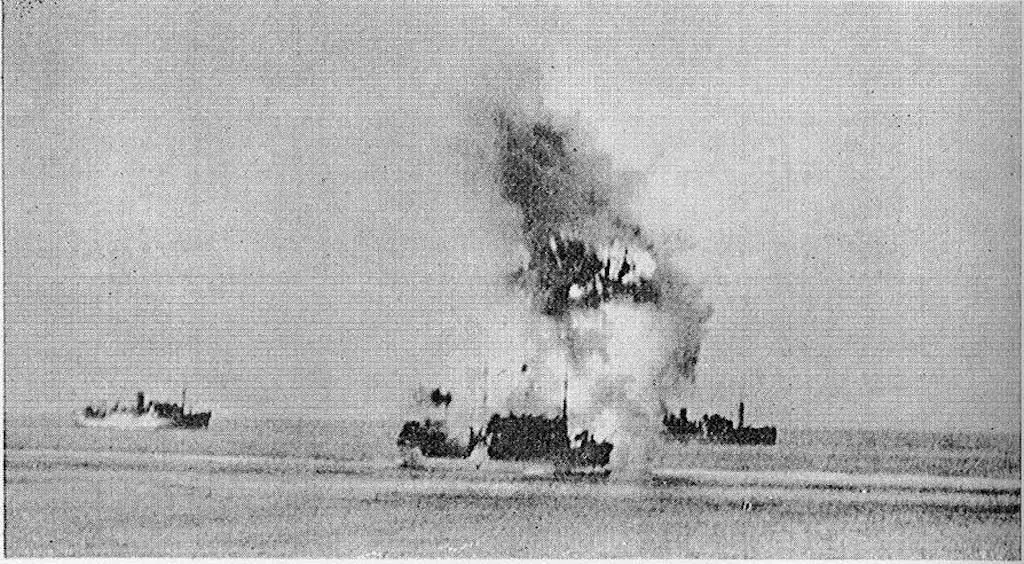In our article on the Mediterranean Convoy War, we attempt to answer the question, “Did the Italians have an effective navy during WWII?” We claim the Italian Navy was relatively successful concerning the protection of several vital convoys destined to North Africa. Here we will try to answer the same question but focusing instead on the use of the Battle Fleet, which is a much more controversial topic, especially among Italian scholars.
The Purpose of Capital Ships
The Italian Battle Fleet in 1940 consisted of the two rebuilt Cavour class battleships, two rebuilt Duilio class battleships and two modern Littorio class battleships. On 10 June 1940, only the two Cavour were operational while the others became so by autumn of the same year. A third and a fourth Littorio class battleships (Roma and Impero) were under construction. However, the Navy soon realized that battleships were not the priority of new naval constructions. The Regia Marina shifted its priority to light warships and merchant vessels needed for the Convoy War.
Practically unable to replace any lost capital ships, Supermarina set out strict dispositions for the commanders at sea. These orders forbade engaging enemy ships in battle unless in a condition of clear superiority. However, these extremely vague orders often led commanders to assume over-cautious behaviors. It is essential to note the overcomplicated and ineffective chain of command in the Regia Marina. Commanders at sea held limited autonomy from Rome. This lack of independence often resulted in a loss of precious time requesting and receiving orders during unfolding actions.
The purpose of the Battle Fleet was to defend large convoys and interdict the enemy as it makes passage through the central Mediterranean. Thus, this doctrine resembled the idea of the Fleet in Being. It was extremely different from the Japanese doctrine, more focused on the decisive battle.
In the next sections we will summarize the main actions where the bulk of the Italian fleet was deployed.
Operations in 1940
One month after the declaration of war, the Italian Battle Fleet escorted a large convoy bound for Libya. Once the convoy safely arrived in Benghazi, news came that the British Mediterranean fleet was at sea. Admiral Campioni realized the enemy was trying to block his way back to Taranto. He subsequently committed the entire formation (two battleships, 14 cruisers, and 26 destroyers) to attack. The action that followed was indecisively but proved the commitment of the commander at sea to engage the enemy.
In September, the battlefleet sailed to intercept a British convoy directed to Malta (Opeation Hats) but failed to intercept the enemy.
-
Taranto Raid
In November 1940, the famous Taranto Raid crippled the Italian battlefleet. The raid knocked the battleships Littiorio, Caio Duilio, and Conte di Cavour out of action. Thanks to the post-war narrative, it is often cited that this attack crippled Italian morale and commitment to engage the enemy.
However, on 17 November, six days after the raid, Admiral Campioni deployed with a powerful formation comprising the only two operational battleships (Vittorio Veneto and Giulio Cesare) to intercept a British convoy aimed at transferring Hurricane fighter planes to Malta in Operation White. When the British realized the Regia Marina was at sea with a superior force, they launched all 12 fighter planes from the carriers and retreated. Due to the early launch, only two planes reached Malta resulting in the overall failure of the mission.
-
Cape Spartivento
A week later, the Royal Navy put another resupply operation in motion, this time more complex and with a more substantial escort. The Regia Marina once again left port to engage the enemy. However, faulty air-recognizance led Admiral Campioni to misjudge the situation, losing a good chance to strike a heavy blow against the Royal Navy. The short gunfire exchange during this action is known as the Battle of Cape Spartivento/Teulada. Soon after the clash, Admiral Iachino replaced Admiral Campioni as commander of the naval forces.
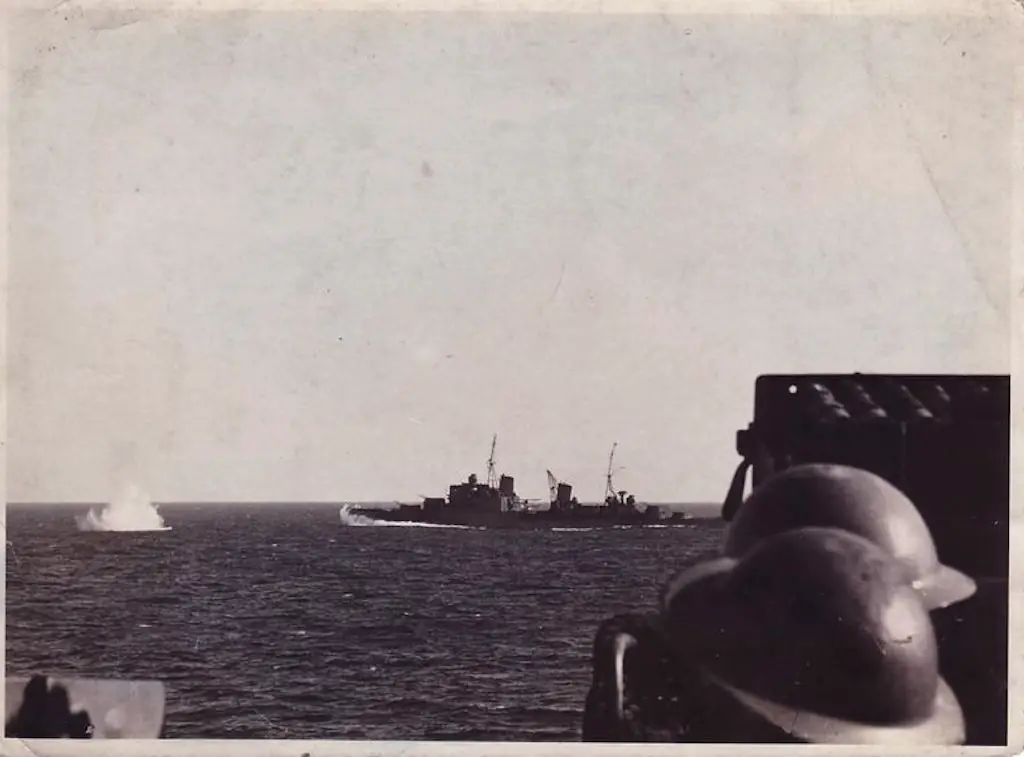
HMS Manchester receiving fire from Italian vessels during the Battle of Capo Teulada. Image take from HMS Sheffield.
Operations in 1941
In February 1941, a British formation departed from Gibraltar managed to bombard Genova. The Italian fleet at sea tried to intercept them, but once again, the faulty air-recognizance hindered Regia Marina’s reaction.
-
Cape Matapan
The first half of 1941 witnessed a dark page in the history of the Italian Navy. This is marked by the disaster of Cape Matapan, which resulted in the loss of three cruisers, two destroyers, and 2,331 men. This ill-conceived operation initiated from political interference and German pressure on the Regia Marina. Together with the lack of the surprise element due to ULTRA due to ULTRA, are the factors in this tragedy.
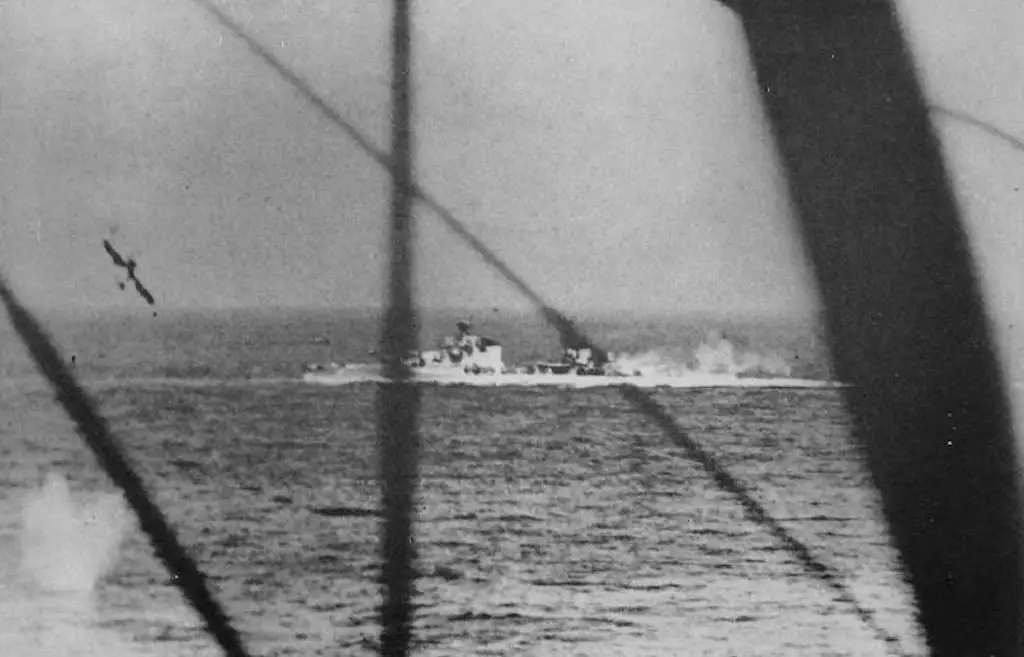
A photo of the Bolzano being attacked by Swordfish at the Battle of Cape Matapan. This image was taken from a second Swordfish that just dropped a torpedo at the bottom left of the image.
-
First Battle of Sirte Gulf
In December 1941, with five out of six battleships back in action, the Regia Marina had recovered its strength. These battleships actively escorted vital convoys directed to Axis forces in North Africa defending a strong British offensive in Operation Crusader. During the first clash of the Sirte Gulf, battleships Littorio, Giulio Cesare, and Caio Duilio safely escorted a group of merchant vessels to their destination and repelled a British attempt to intercept the convoy.
Operations 1942
In March 1942, another resupply operation for Malta commenced. The convoy departed Alexandria, escorted by five cruisers and 18 destroyers. Admiral Iachino commenced an interception. He deployed with the battleship Littorio, three cruisers, and eight destroyers. The two formations met in rough sea conditions giving birth to the second battle of the Sirte gulf.
-
Second Battle of Sirte Gulf
During the gunfire exchange, Italian barrages hit several British units. But when darkness approached, Iachino ordered his ships back to port. Although the Italians retreated, their intervention caused the British escort ships to consume precious fuel and reduce their autonomy. As a result, the convoy sailed alone to Malta. During the next several days, German and Italian bombers hit a number of these ships. As a result, Malta received only 5,000 tons of supplies out of 25,000 destined for the island.
-
Harpoon/Vigorous/Pedestal
The air offensive against Malta and the losses suffered by their convoys led the Royal Navy to mount two significant resupply operations in summer 1942 (Operation Harpoon/Vigorous and Operation Pedestal). These operations gave birth to the biggest air-naval battles fought in the Mediterranean. Operation Harpoon/Vigorous witnessed the very last remarkable action of the Italian battlefleet. Vittorio Veneto and Littorio once again aggressively deployed to intercept the British convoy. Their presence ultimately led the Royal Navy to retreat and plan a further resupply operation for the following month.
After June 1942, fuel shortages led the Regia Marina to limit its deployment of operational battleships. Cruisers and destroyers took part in most subsequent battles fought until the armistice of 1943.
Was it an Effective Navy?
Despite post-war criticism of the Regia Marina’s actions in the war, the Regia Marina utilized its battleships quite wisely during World War Two. With Italy’s critical strategic condition, lack of air-ship coordination, absence of radar, and overcomplicated chain of command, the Battle Fleet committed itself to action and managed to achieve some successes, before learning harsh lessons in 1940 and 1941. They forced the British to divert considerable efforts towards the Mediterranean theatre, which is an element that cannot be overlooked.
However, we must remember that the Regia Marina was generally unsuccessful in stopping the Royal Navy convoys resupplying Malta. This is crystal clear for 1940 and 1941 while in 1942 the Regia Marina, the Luftwaffe and the Regia Aeronautica inflicted higher losses that eventually forced the allies to mount the gigantic Operation Pedestal. Thus, the Italians (and the Germans) failed to completely nullify the threats Axis convoys faced on their way to Libya.
One should always remember that the terrible naval-aerial cooperation among the Italian armed forces resulted in poor maritime recognisance, which ultimately hindered on many occasions the ability of the Regia Marina to intercept the British at sea.
Getting back to the main objective of the Regia Marina, we should also remember that the Italians committed their battleship force in pushing its convoys through the Mediterranean in periods when Malta’s threat was stronger (December 1941 – March 1942).
American historian Mark E. Stille stated:
“Operationally, Italian battleships were well employed and were a crucial aspect of what was a largely successful naval war waged by the Regia Marina. The Italians were able to achieve their primary objectives by holding the sea lanes open while simultaneously denying the Allies transit of the central Mediterranean until August 1943.”
MARK E. STILLE
Perhaps this statement is a little too generous. But undoubtedly more accurate than the false myth of the Regia Marina being a timid force hiding in port and giving up the fight.
I do not pretend to give a final answer to the original question, but I hope I have provided more “food for thoughts”.
Sources:
Giorgio Giorgerini, La Guerra Italiana sul mare: la marina tra vittoria e sconfitta 1940–1943, Edizione Mondadori (2001).
Pier Paolo Ramoino, Una storia “strategica” della Marina Militare Italiana, Rivista Marittima (2018).
Riccado Nassigh “Le Battaglie Navali Italiane”, Delta Editrice (2011).

